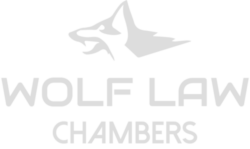LAW
Cost-Saving Tips for Lawyers Renting a Coworking Space in Canada
Coworking spaces are revolutionizing how legal professionals work in Canada, offering flexible, cost-effective alternatives to traditional office spaces. With access to modern amenities and the chance to network with professionals from various industries, coworking spaces are helping lawyers save on overhead costs while boosting productivity. Here are some ways lawyers can maximize the positive impact of coworking spaces, making them a smart choice for cost savings and business growth.
1. Assess Your Workspace Needs
One of the best aspects of coworking spaces is the ability to tailor your workspace to suit your needs.
- Whether you need a private office for client meetings or prefer the flexibility of shared desks, coworking spaces can adapt to your preferences.
- By selecting the right space, you avoid unnecessary costs for amenities or features you don’t require, helping you optimize your budget while maintaining a professional setting.
2. Take Advantage of Flexible Plans
Coworking spaces offer various membership options, allowing you to choose the plan that aligns with your schedule and business requirements.
- For lawyers who frequently travel or work from home, part-time or flexible access plans provide significant savings compared to traditional office leases.
- This flexibility ensures you only pay for the space when you truly need it, making coworking an economically smart choice for those with fluctuating office time.
3. Share Resources with Other Lawyers
Networking is one of the most valuable aspects of coworking spaces.
- By collaborating with fellow legal professionals, you can share the cost of premium resources such as meeting rooms, legal research tools, and administrative support.
- This collective approach fosters an environment of mutual benefit, helping you save money while enhancing your professional network and potential for referrals.
4. Utilize Free Amenities
Many coworking spaces come with a range of complimentary amenities, such as high-speed internet, printing services, coffee, and access to common areas for networking or brainstorming.
- These amenities reduce your everyday operational costs, saving you the expenses of buying equipment or paying for external services.
- The value of these included services can significantly offset the cost of renting a workspace.
5. Optimize Technology
Coworking spaces often feature advanced technology, including video conferencing setups, projectors, and presentation tools.
- By utilizing these resources, lawyers can avoid investing in expensive tech equipment.
- Whether it’s for client consultations, virtual hearings, or internal meetings, shared technology allows lawyers to maintain a high level of professionalism without the hefty price tag.
6. Network for Value
The networking potential in coworking spaces is a major benefit for lawyers.
- Coworking spaces foster a community of professionals across various industries, presenting opportunities for valuable collaborations and partnerships.
- Building these connections can lead to client referrals, business development, and even opportunities for mentorship. Networking in a shared workspace can be a win-win, offering both financial and professional growth.
7. Review Contracts Carefully
Legal professionals are particularly skilled at reviewing contracts, and coworking agreements are no exception.
- A transparent, well-understood contract guarantees that you won’t be caught off guard by unexpected expenses, keeping your budget on track.
Final Thoughts Coworking spaces have become a powerful tool for lawyers in Canada, offering cost-effective solutions that boost both efficiency and networking opportunities. By embracing the flexibility, shared resources, and community engagement that coworking spaces provide, lawyers can reduce overhead costs while growing their practices in a dynamic and supportive environment.
Have you experienced the positive impact of coworking spaces in your legal practice? Share your insights in the comments below!
Top 5 Factors Canadian Lawyers Should Consider Before Renting a Coworking Space
The legal profession demands a balance between privacy, professionalism, and practicality. For Canadian lawyers exploring coworking spaces, selecting the right environment is critical. Here are the top five factors to consider:
1. Privacy and Confidentiality
Lawyers handle sensitive client information, so the coworking space must offer private offices or meeting rooms where confidentiality is guaranteed. Look for spaces with soundproofing and secure document storage.
2. Professional Image
First impressions matter. The coworking space should exude professionalism, with elegant interiors, reliable tech support, and a welcoming reception. A polished setting instills confidence in your clients.
3. Accessibility and Location
Choose a centrally located coworking space that’s easy for both you and your clients to access. Proximity to courthouses, government offices, and public transit can save valuable time and enhance convenience.
4. Amenities and Resources
Ensure the space offers amenities that support your daily operations, such as high-speed internet, printing services, and equipped boardrooms. Bonus points for on-site parking, cafes, or fitness centers that add to your workday convenience.
5. Flexibility and Cost-Effectiveness
Consider a space with flexible leasing terms, as your practice’s needs may evolve. Ensure the pricing model aligns with your budget without compromising essential services.
In Conclusion
Choosing the right coworking space can enhance your practice by offering a blend of professionalism, functionality, and convenience. Take the time to assess your priorities and find a space tailored to your needs as a Canadian lawyer.
Creating a Productive Work Environment in a Shared Office: A Lawyer’s Guide
The rise of shared office spaces has redefined the modern work environment. While these spaces offer flexibility and cost-efficiency, they also come with unique challenges, especially for professionals like lawyers who handle sensitive information and require focused work sessions. Here’s a guide to help lawyers thrive in a shared office setting.
1. Choose the Right Space
Not all shared offices are created equal. When selecting a coworking space, prioritize those with:
- Private rooms or soundproof pods for confidential discussions.
- Strong security protocols to protect sensitive client data.
- Quiet zones or designated areas for focused work.
2. Establish Clear Boundaries
Shared spaces often blur the lines between personal and professional. To maintain productivity:
- Clearly communicate your availability to others using signals like desk signs or online statuses.
- Use noise-canceling headphones to minimize distractions.
- Avoid engaging in non-essential conversations during work hours.
3. Leverage Technology
Maximize your productivity by investing in tools that help you work efficiently:
- Case management software for organizing client information securely.
- Encrypted communication tools for maintaining client confidentiality.
- Time management apps to stay on top of deadlines.
4. Build Relationships Wisely
Networking is one of the greatest perks of shared offices. However, as a lawyer, you need to:
- Balance openness with discretion to avoid disclosing sensitive information.
- Engage in professional conversations that align with your expertise.
- Collaborate only when it adds value to your practice.
5. Prioritize Self-Care
Shared offices can sometimes be high-energy environments. Stay grounded by:
- Taking regular breaks to recharge.
- Personalizing your workspace to create a sense of comfort.
- Practicing mindfulness or using stress-management techniques.
6. Stay Compliant
Lawyers must adhere to strict ethical standards and legal requirements, even in a shared office. Ensure:
- Client files are securely stored, both physically and digitally.
- Conversations about cases are held in private spaces.
- Compliance with local bar association rules regarding shared workspaces.
Conclusion
Working in a shared office as a lawyer can be both rewarding and challenging. By choosing the right environment, setting clear boundaries, leveraging technology, and adhering to professional standards, you can create a workspace that supports your productivity and fosters professional growth.
Professional Development for Solo Practitioners: Making the Most of Office Networking Events.
For solo practitioners, shared office networking events are golden opportunities to grow professionally and build valuable connections. Here’s a quick guide on how to maximize these events:
1. Set Clear Goals
Identify what you want to achieve, whether it’s finding collaborators, learning new trends, or gaining insights. Having a purpose makes your interactions intentional.
2. Perfect Your Introduction
Craft a concise, engaging introduction that captures what you do. Practicing it will help you make a memorable first impression.
3. Build Genuine Connections
Networking isn’t just about exchanging contacts—focus on meaningful conversations. Show genuine interest in others’ work, and follow up afterward to build lasting connections.
4. Approach with a Learner’s Mindset
Take advantage of talks and breakout sessions. Each conversation or presentation can offer valuable insights to inspire your own work.
5. Offer Value
Whenever possible, share your expertise or connect others. Contributing meaningfully establishes you as a valuable network member.
6. Stay in Touch
Maintain connections by engaging on LinkedIn, sharing relevant articles, or just checking in occasionally. Consistent interaction strengthens professional relationships.
Final Thought
Networking events can propel solo practitioners forward. By setting goals, fostering genuine connections, and adding value, you’ll turn these opportunities into stepping stones for growth.
Cost Considerations: The Final Advantages of Renting vs. Owning Office Space for New Lawyers
When starting a legal practice, new lawyers face a pivotal decision: should they rent or buy office space? Given the unique demands and uncertain growth stages of a fledgling law firm, understanding the cost implications of both options is critical. Here’s a breakdown of the financial factors that make renting an attractive choice for new legal professionals:
1. Lower Initial Investment
Buying office space requires significant upfront costs, including a down payment, loan fees, and potentially high closing costs. For most new lawyers, who are managing startup expenses and potentially still paying off student loans, this large capital requirement can be a major barrier. Renting, on the other hand, usually only involves a security deposit and the first month’s rent, preserving cash flow for critical early-stage investments, like technology, staff, and marketing.
2. Predictable Monthly Expenses
Ownership might sound appealing for asset-building, but it often comes with fluctuating expenses: property taxes, maintenance, and unexpected repairs. In contrast, leasing provides predictable monthly costs, allowing for easier budgeting. Many lease agreements bundle utilities, maintenance, and janitorial services, meaning new lawyers can focus on their practice without sudden, unexpected expenses.
3. Flexibility to Scale
New law firms often need time to understand their growth trajectory and target market. Renting allows lawyers to choose a space that fits their current needs with the flexibility to scale up or down as the business changes. Leasing short-term or in flexible coworking spaces lets firms relocate or expand as needed, a level of adaptability that buying can’t offer without major cost implications.
4. Less Administrative Burden
Owning property comes with a long list of responsibilities—from building upkeep to managing legal compliance issues—which can quickly drain time and resources. Renting transfers much of this burden to the landlord, allowing lawyers to focus on building their client base. When starting a practice, minimizing distractions and administrative demands is key, making renting an efficient option.
5. Access to Prime Locations at Lower Costs
Renting gives new lawyers access to desirable, high-visibility locations that may otherwise be prohibitively expensive to buy in. A well-located office can boost brand perception and client convenience, enhancing a new firm’s ability to attract clients and build its reputation without the heavy investment required to buy in these areas.
Final Thoughts
For new lawyers, renting provides financial flexibility, manageable costs, and operational advantages that are hard to match with ownership. While buying can be a smart long-term goal, renting can be the most effective path to a successful start in the legal field.
Starting your firm on solid financial footing is essential, and renting office space can offer the stability and flexibility needed to grow and thrive.
How Coworking Spaces for Lawyers Foster Collaboration and Innovation.
The legal profession, long associated with traditional office setups and individual practice, is embracing a new trend: coworking spaces. Initially popular among startups and freelancers, coworking environments have evolved to cater to professionals across industries, including law. This shift reflects a growing recognition of the benefits coworking spaces offer—particularly in fostering collaboration, innovation, and flexibility.
For lawyers, who often juggle a combination of client meetings, case preparations, and research, a coworking space presents an opportunity to work in a dynamic environment that encourages fresh ideas and enhances productivity. Here’s how coworking spaces are reshaping the legal landscape.
1. Collaboration and Networking Opportunities
Coworking spaces allow lawyers to interact with professionals from diverse backgrounds, ranging from tech entrepreneurs to marketing specialists. This environment facilitates cross-industry networking, enabling lawyers to gain insights into various fields, which can be incredibly valuable when handling cases that involve specialized knowledge.
Many coworking spaces also offer networking events, lunch-and-learns, and community gatherings, which provide informal settings for lawyers to exchange ideas, seek advice, and explore potential partnerships. These interactions can lead to referrals, collaborations on complex cases, and even new client opportunities.
2. Access to Cost-Effective Resources
Setting up a traditional law office comes with substantial overhead costs—from rent to utilities to office furnishings. Coworking spaces offer a cost-effective alternative, where lawyers can access modern amenities like conference rooms, high-speed internet, and secure document storage without bearing the full cost of a dedicated office.
For small firms and solo practitioners, coworking spaces provide access to high-quality resources that may otherwise be financially prohibitive. The flexibility of coworking memberships, which often allow for monthly or even daily access, enables lawyers to scale their office space according to their workload.
3. Increased Flexibility and Work-Life Balance
The legal profession is often demanding, requiring long hours and extensive research. Coworking spaces typically offer 24/7 access, which allows lawyers to manage their time more effectively and work outside the constraints of a traditional 9-to-5 schedule. This flexibility can lead to better work-life balance, as lawyers can choose hours that suit their personal productivity cycles and family needs.
Additionally, many coworking spaces feature relaxation areas, fitness centers, and wellness programs. These amenities support mental and physical health, which can be especially beneficial for lawyers working under high stress.
4. Innovation-Driven Atmosphere
Coworking spaces are known for their energetic, forward-thinking atmospheres. The presence of tech startups and creative agencies can inspire lawyers to think outside the box and adopt more innovative approaches to their practice. Some spaces even offer access to technology, such as AI-driven research tools, which can enhance legal research, data analysis, and case management.
For example, tech-oriented coworking spaces may host workshops on emerging trends, such as cybersecurity law or AI ethics. Lawyers in these spaces gain exposure to new technology and ideas that are transforming the legal field, allowing them to stay competitive and relevant.
5. Client Accessibility and Enhanced Professional Image
Coworking spaces are typically located in central, easily accessible areas, making it convenient for clients to meet with their legal advisors. Having a professional, well-furnished space for client meetings projects a polished image, which is critical in establishing trust and credibility.
Many coworking spaces offer reservable conference rooms and soundproof pods, allowing lawyers to conduct confidential meetings with clients in a private setting. This is particularly useful for solo practitioners who may not have a permanent office but still want to provide a professional client experience.
Conclusion: A Future-Ready Work Environment for Legal Professionals
Coworking spaces are transforming the way lawyers approach their work, offering unique opportunities to innovate, collaborate, and grow. By moving away from isolated office environments, lawyers can leverage the benefits of a shared workspace to build valuable connections, improve work-life balance, and stay at the forefront of an evolving industry. Embracing coworking may well be the key to thriving in today’s fast-paced, interconnected professional landscape.
As the demand for flexible and collaborative workspaces grows, coworking spaces are likely to become a vital part of the legal profession, enabling lawyers to work smarter, more efficiently, and in sync with modern trends.
Legal Technology for Remote Lawyers: Essential Tools for Virtual Practice.
As remote work becomes more common in the legal sector, lawyers must adapt to new digital tools that allow them to deliver top-notch services from anywhere. Legal technology is revolutionizing how lawyers manage clients, cases, and administrative tasks, allowing for seamless collaboration and enhanced productivity in a virtual practice. Here are essential tools every remote lawyer should consider incorporating into their workflow.
1. Case Management Software
Case management software is a cornerstone for any law firm transitioning to virtual practice. Solutions like Clio, MyCase, and PracticePanther offer centralized platforms where lawyers can organize case details, manage client communications, and set automated reminders. These tools streamline workflows and make it easy to access case information securely from anywhere.
2. Document Management & E-Signing Tools
Managing and signing documents is a significant part of legal work. Cloud-based tools like NetDocuments, iManage, and DocuSign allow lawyers to draft, store, and securely share documents with clients and colleagues. These tools provide version control and encryption, essential for maintaining confidentiality and ensuring compliance.
3. Secure Communication Platforms
Ensuring secure client communication is paramount for remote lawyers. Platforms like Zoom, Microsoft Teams, and Slack offer encrypted communication options. Additionally, legal-specific solutions like Legaler provide secure video conferencing and meeting scheduling tailored for lawyers, enabling real-time collaboration while prioritizing confidentiality.
4. Time Tracking & Billing Software
Time tracking and billing can be more complex in a virtual environment. Tools like Bill4Time, TimeSolv, and LeanLaw help lawyers track time accurately, automate invoicing, and handle online payments. These platforms can integrate with case management systems, creating a seamless process from casework to client billing.
5. Legal Research Tools
Virtual lawyers need access to extensive legal research databases. Services like Westlaw, LexisNexis, and Casetext offer cloud-based access to legal databases, case law, statutes, and secondary sources. Using AI-driven tools, these platforms provide advanced search capabilities, enabling lawyers to find relevant information quickly.
6. Cybersecurity Solutions
Protecting client information in a remote setup is crucial. Cybersecurity solutions like VPNs (NordVPN or ExpressVPN), antivirus software (Norton, McAfee), and data encryption tools (BitLocker, VeraCrypt) are essential for securing devices and sensitive information. Additionally, secure file-sharing platforms like ShareFile and OneDrive offer encrypted storage solutions for confidential documents.
7. Artificial Intelligence & Automation Tools
AI-driven tools can help automate repetitive tasks, allowing lawyers to focus on higher-level casework. Software like Luminance for document review and Kira Systems for contract analysis leverages AI to analyze large volumes of data, enhancing accuracy and efficiency. Automation tools such as Zapier and IFTTT can integrate various applications, helping lawyers streamline their workflows.
Embracing the Future of Legal Practice
Remote work is here to stay, and legal technology enables lawyers to continue providing exceptional service from any location. By integrating these tools into a virtual practice, lawyers can improve client service, stay compliant, and maintain a competitive edge in the evolving legal landscape. As the technology advances, the future for remote legal practice looks promising, empowering lawyers to practice with agility and effectiveness in a digital-first world.
Final Thoughts
Transitioning to remote legal work requires a strategic approach to technology adoption. With the right tools in place, lawyers can deliver quality legal services securely and efficiently, meeting the demands of modern clients and positioning themselves for long-term success. Embrace legal technology as a vital partner in navigating the new normal of remote practice.
A Guide to Managing Client Meetings in Shared and Virtual Offices
With the rise of remote work, many professionals are conducting client meetings from shared or virtual offices. These spaces are often convenient and cost-effective, but they come with unique challenges that can impact your ability to make a good impression and run a smooth meeting. Here’s a quick guide to effectively managing client meetings in these environments.
1. Plan the Logistics in Advance
- Reserve a Private Space: In shared offices, always book a private room for your meetings. Check for any policies on noise and client usage so you can confidently handle your conversation.
- Test Equipment: If using video conferencing, verify that all technology is working beforehand. Poor audio or visual quality can create a frustrating experience for clients.
- Send Clear Details: For virtual meetings, share the access link, password, and any meeting agenda with clients in advance. Providing clear instructions on how to join minimizes technical issues.
2. Create a Professional Atmosphere
- Declutter the Background: Whether in a shared office or virtual setup, a neat background is essential. It conveys professionalism and keeps the client focused on you, not distractions.
- Dress Appropriately: Even in virtual settings, dress in a professional or business-casual attire. A polished look reinforces that you take the meeting—and the client—seriously.
- Control Background Noise: Use noise-canceling tools or features to minimize disruptions. Some virtual offices offer noise-dampened rooms; if available, take advantage of this.
3. Set Clear Meeting Objectives
- Define Purpose and Goals: Start the meeting by outlining the goals to help clients understand what you aim to achieve. This sets a clear roadmap and maximizes efficiency.
- Prepare an Agenda: An agenda helps guide the discussion and ensures you cover all critical points without going off track. It also demonstrates that you’ve put thought into the meeting.
4. Use Effective Communication Tools
- Share Visual Aids: For virtual meetings, screen sharing can be a powerful tool for showing presentations or documents. In shared office settings, make use of any whiteboards or display screens available.
- Take Notes and Summarize Key Points: This helps maintain clarity, especially when complex topics are discussed. Summarize main takeaways at the end to confirm everyone is on the same page.
5. Follow Up After the Meeting
- Send a Summary: A brief summary email of discussed points and next steps shows professionalism and reinforces the meeting’s goals.
- Seek Feedback: Ask if the client had any concerns with the format or if improvements could be made. This demonstrates a commitment to a client-focused approach.
With a few intentional steps, you can overcome the challenges of shared and virtual offices and create a smooth, professional experience for your clients. Planning, communication, and professionalism will ensure your client meetings leave a lasting positive impression.
Networking Within Your Office Space: How Law Chambers Foster Professional Growth
In the world of law, it’s often said that who you know can be as crucial as what you know. While external networking events and professional gatherings are important, sometimes the most powerful connections are found right within your workspace. Networking within law chambers is a strategic way for legal professionals to gain insights, enhance their skills, and foster career growth.
1. Building Rapport and Trust
One of the greatest benefits of networking within your chambers is the opportunity to build rapport with colleagues who share the same space and face similar challenges. These are professionals who understand the demands of the job and can relate to your experiences on a deeper level. Through daily interactions, casual conversations, and collaborative work, you can foster relationships based on trust and mutual respect. This trust becomes a foundation for open communication, honest feedback, and invaluable support that can positively impact your career.
2. Learning from Senior Colleagues and Mentors
Law chambers typically bring together professionals of varying experience levels. Networking internally allows junior lawyers to learn directly from more seasoned practitioners who have years of expertise. These senior colleagues often provide mentorship, offering insights that can’t be found in textbooks or training sessions. Whether it’s understanding courtroom strategy, improving drafting skills, or tackling challenging cases, learning from experienced mentors can significantly accelerate professional development.
3. Knowledge Sharing and Skill Development
Networking within law chambers enables a culture of knowledge sharing. Colleagues often discuss recent case laws, legal trends, and important rulings. This collaborative approach to learning helps lawyers stay updated on industry developments and enhances their problem-solving abilities. Through shared knowledge, lawyers can improve their technical skills, refine legal research techniques, and develop a broader perspective on various legal issues.
4. Building a Supportive Professional Community
Legal work is demanding, and at times, it can be mentally and emotionally taxing. Networking within your chambers can create a supportive professional community that understands these challenges. Colleagues within the same office can serve as sounding boards, offer advice, or simply lend an empathetic ear. This support network can be crucial during particularly difficult cases or busy periods, helping to reduce stress and boost morale.
5. Creating Future Career Opportunities
Connections within your law chamber can open doors to future career opportunities. Building strong relationships with peers and mentors may lead to recommendations for promotions, external job offers, or invitations to join prestigious cases. Additionally, colleagues you network with today may become partners, judges, or senior figures in the future. These relationships can be invaluable as your career progresses, potentially leading to fruitful collaborations or career advancements.
Final Thoughts
While external networking is valuable, don’t overlook the importance of connecting with those in close proximity. Networking within your law chambers offers unique growth opportunities that can enrich your professional journey. By building rapport, learning from experienced colleagues, sharing knowledge, fostering a supportive community, and creating future career possibilities, you can transform your workspace into a valuable network that fuels your success.
Invest time in getting to know your colleagues, as they may hold the key to your next big break in the legal world!
Virtual Offices for Ontario Lawyers: How to Maintain a Professional Image.
With the rise of remote work, many Ontario lawyers are opting for virtual offices, allowing greater flexibility and efficiency. However, maintaining a professional image remains essential for success and credibility in the legal field. Here’s how you can manage this balance while upholding a polished image.
1. Choose a Reputable Virtual Office Provider
Selecting a reliable virtual office provider can make all the difference. Look for a provider offering a prestigious business address in Ontario, ideally in a well-recognized area, as this will boost credibility with clients and peers. Additionally, services such as mail handling and access to professional meeting rooms can enhance your image and meet client expectations.
2. Emphasize Secure Communication Channels
Maintaining client confidentiality is paramount in legal work. Using secure and encrypted communication tools for email, document sharing, and video calls is essential for a virtual setup. Opt for legal-specific platforms that comply with Ontario’s data protection laws to ensure your communication meets regulatory standards.
3. Create a Professional Online Presence
A well-maintained website, LinkedIn profile, and other social media pages can be valuable assets. Make sure these platforms convey a polished, professional brand by keeping profiles updated with accurate information, testimonials, and relevant articles. Share insights on your practice areas to establish expertise, which will also help build credibility among clients.
4. Utilize Professional Meeting Spaces as Needed
Virtual doesn’t mean never meeting clients in person. When in-person meetings are necessary, consider using high-quality meeting spaces provided by your virtual office service. These spaces provide a professional environment for interactions, helping you create trust and deliver a memorable client experience. If video calls are the norm, maintain a distraction-free background and dress professionally to convey your commitment to professionalism.
5. Prioritize Responsiveness and Organization
Client trust is built on reliability. Since virtual offices often rely on electronic communication, responding quickly to inquiries is critical. Implement a digital organization system for scheduling, file storage, and client communications. Reliable management of these areas will reflect positively on your practice, reinforcing your professional image.
6. Invest in Digital Business Tools
Use legal-specific software that enhances client experiences, like online billing and scheduling systems. These tools streamline your workflow and give clients easy access to essential services, ensuring a seamless experience that matches an in-office visit.
Final Thoughts
Virtual offices offer Ontario lawyers many advantages, but professionalism must remain a priority. By choosing a credible provider, leveraging secure communication, and maintaining a polished digital presence, you can build trust and credibility with clients while enjoying the flexibility of a virtual setup. Embrace this modern approach to practice without compromising on quality or client expectations.










